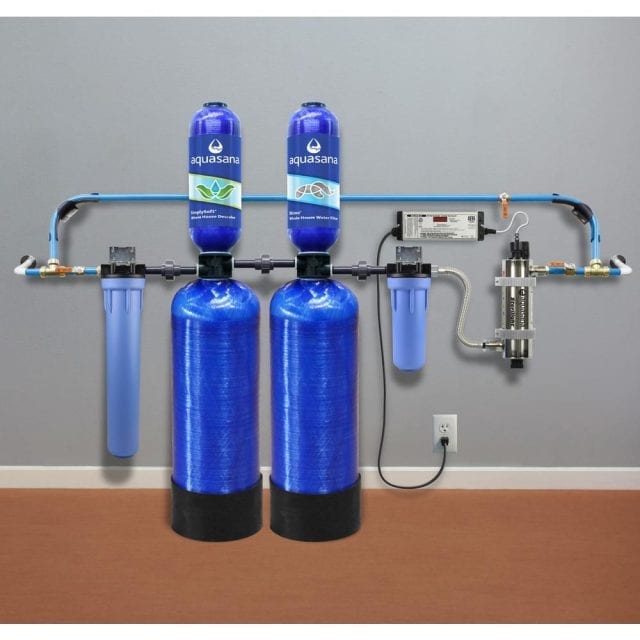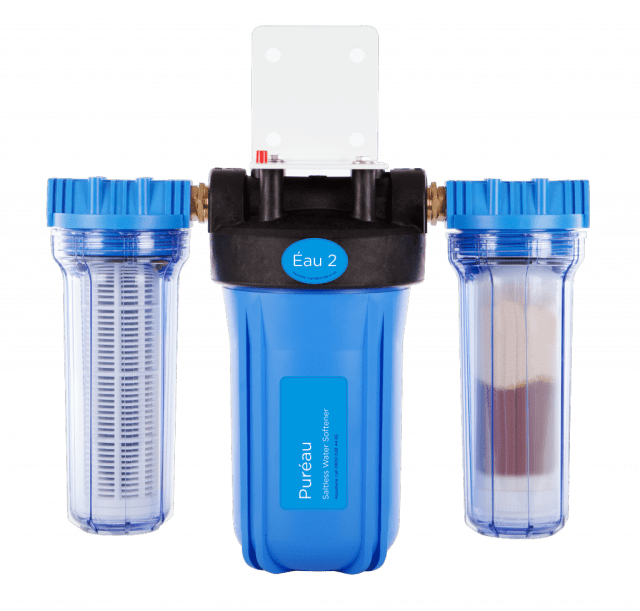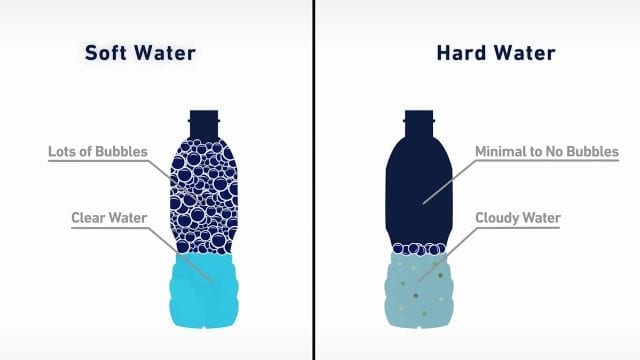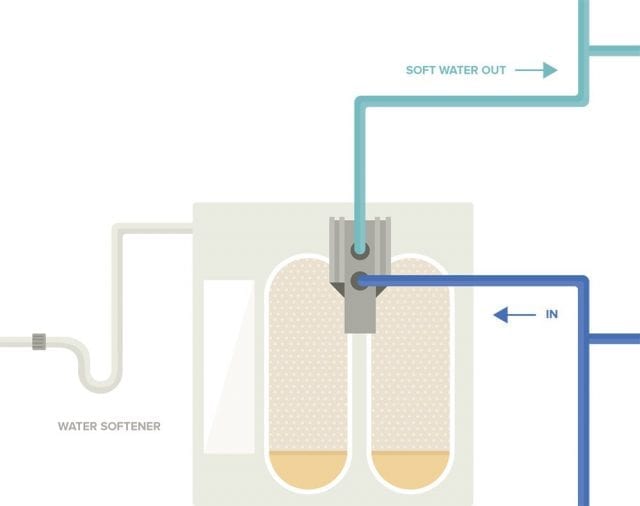
Have you, at any point, considered what precisely is a water conditioner? All things considered, isn’t delicate? Reasonable point. Yet, conditioners were made to battle a shockingly normal issue: hard water.
As per the U.S. Topographical Survey, around 85 percent of American family units use hard one, incorporating homes with well and city.
The expression “hard water” may seem like a confusing expression. However, it’s a family home supply that contains high centralizations of disintegrated minerals, explicitly calcium and magnesium. These minerals don’t make it undesirable to drink. They additionally are generally imperceptible through smell or taste. However, they can be hurtful nevertheless.
Hard water can cause numerous issues around your home, from spots on dish sets after washing them and a film on showers and bathtubs ways to pipes issues and wasteful activity of utilizing machines. Introducing a softener can help remove hard mineral problems. Become familiar with conditioners and softeners to get the best one for your home.
What Is A Water Softener?

Water softening is generally accomplished utilizing lime relaxing or particle trade resins yet is progressively being achieved utilizing nano-filtration or invert assimilation films and membranes.
Softening and conditioning is the expulsion of magnesium, calcium, and certain other metal particles. The subsequent delicate requires less cleanser for a similar cleaning exertion, as cleansers and other common cleaning products attach with calcium particles. Delicate soft water likewise expands the lifetime of pipes by lessening or disposing of developed clogging in channels, pipes, and fittings.
A normal softening system comprises of a tall, slender conditioner tank, and a short, wide saline solution tank. The conditioner tank is associated with the home’s supply line. A little width fill cylinder associates the saline solution tank to the conditioner tank. What’s more, a release hose keeps running from the conditioner tank to a close-by drainpipe.
Conditioners for entire houses are produced in an assortment of sizes and styles to provide enough soft ones for the size of your home and family. The conditioner is introduced in the storm cellar, carport, utility storage room or any place water goes into the house.
Water enters the highest point of the conditioner tank and permeates down through the beads of resin. The tar has a negative charge, which draws in the positively charged minerals (a procedure known as ion exchanging or trading particles). The mineral stores stick to the pitch, and the now-mellowed leaves the conditioner tank and streams all through the household.
Differences Between Soft And Hard Water

Hard one: it contains an obvious amount of disintegrated minerals (like calcium and magnesium). Soft one: it cleaned and conditioned in which the main particle is sodium. As the water rises and falls from the sky, it is normally soft, which is why it tastes salty and is, in some cases, not appropriate for drinking.
Practitioners of housekeeping love utilizing soft water while completing chores and tasks, as assignments can be performed all the more productively with it. A cleanser will foam better, and things will be left cleaner. Glasses will shimmer and hair will look shiny. The shower drape will be free of residue and scum. Garments and skin are left a cleaner, smoother, and more vibrant.
Soft one saves money and time for those who are frequent users of the liquid gold we call water. When chores are completed using soft ones, items are cleaner because fewer cleansers and cleaning products will be utilized. Since apparatuses and mechanisms won’t have to work as hard, it can likewise expand the life of clothes washers, dishwashing machines, and radiators. Less machine usage means lower energy bills when in family units with conditioners. In a period of rising utility costs, this is something to consider.
At the point when it comes down, the significant contrast among hard and delicate water can best be seen while doing family unit errands. The hard one is to be faulted for soiled looking dresses, dishes with spots and buildup, and baths with bunches of film and cleanser rubbish. Indeed, even hair washed in hard one may feel clingy and look dull. Hard water can negatively affect family unit machines also and go through more vitality. The components of this type are to be faulted for these negative elements, as a cleanser is less compelling because of its response to the magnesium and calcium. The foam isn’t as rich and bubbly.
Methods of Water Softening

The best methods for accomplishing water softening is by a procedure of particle trading (known as Ion-exchange), whereby the magnesium and calcium particles are expelled and supplanted by other mineral elements, most ordinarily sodium chloride and sodium from salt, although potassium salts can likewise be utilized.
Water softening in its strictest structure suggests the expulsion from the water of the minerals that cause hardness, in particular, magnesium and calcium – and to a lot lesser degree, iron.
Things being what they are with public municipal water, what are some great strategies for softening water? How about we make a plunge and perceive how we can figure out how to soften your hard city and suburban water.
- Lime is softening: the softening procedure wherein lime is introduced to hard water to make it gentler. It has a few preferences over the particle trade technique yet is, for the most part, fit for business treatment applications.
- Chelating Agents: A generally utilized engineered chelator is EDTA (ethylenediaminetetraacetic corrosive), which may exist as a disodium or tetrasodium salt. Because of natural and sea and ocean toxicity concerns in regards to broad utilization of EDTA in family and individual consideration items, options, for example, tetrasodium glutamate diacetate, trisodium ethylenediamine succinate and sodium phytate/phytic acids are becoming more progressively used.
- Ion-Exchange Resin: Particle trade (ion-exchange) resins are natural polymers containing anionic useful gatherings to which the divalent Ca2+(calcium) cations tie more emphatically than monovalent cations Na+(Sodium). Zeolites, which are contaminants that are not biological or organic, additionally show ion-exchange attributes. Zeolite minerals are generally utilized in clothing cleansers. Resins are additionally accessible to evacuate the carbonate, bicarbonate, and sulfate particles that are consumed and hydroxide particles that are discharged from the ion-exchange resin.
- Reverse Osmosis: Reverse osmosis assimilation utilizes an exerted weight over a semi-porous film membrane to defeat osmotic pressures and expel water atoms from the arrangement with hardness particles. The film membrane has pores huge enough to concede water particles for section; hardness particles, for example, Ca2+(calcium) and Mg2+(magnesium), won’t fit through the pores. The subsequent soft water supply is free of hardness particles with no different particles being included. Films are a kind of channel requiring standard cleaning or substitution upkeep.
- Distillation and Rain one: Since calcium and magnesium exist as unchangeable salts, they can be expelled from sources by refining. Refining is excessively costly as a rule due to the quality of produce. It is delicate in light of the fact that it is normally refined during the water cycle of condensation, precipitation, vanishing, buildup, and evaporation
Saltless Water Softeners
Softeners that use salt to condition utilize negatively charged resin to draw in and expel calcium and magnesium from home supplies.
Softeners that don’t use salt do quite the opposite. They don’t expel hard minerals from; they change them. Saltless softeners, such as one from watersoftenergurus.com, change the magnesium and calcium synthetically, so they don’t stick to surfaces and encourage grime.
Since the minerals are not caught in softener devices without the conditioner frameworks, there is no requirement for salt or a recovery cycle to cleanse the minerals down the channel. Since the very meaning of softening necessitates that hard minerals are expelled altogether, and the saltless procedure just alters the minerals, enabling them, saltless softeners don’t soften the supply – Therefore it’s usually called “water conditioning”. The ideal approach to determine what framework you’ll be content with is to have an examination done by professionals.





